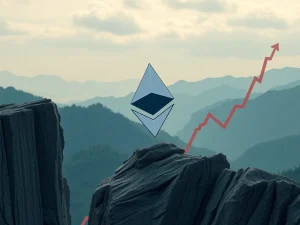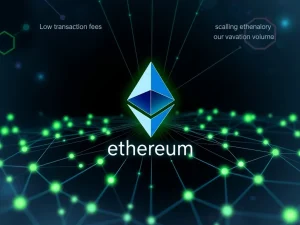Unveiling the Ether Rich List 2025: Top ETH Holders Revealed

Are you curious about who truly controls the vast reserves of Ether (ETH)? The **Ether rich list** of 2025 offers a fascinating look into the distribution of Ethereum’s native cryptocurrency. While many imagine individual billionaires, the reality reveals a complex landscape dominated by powerful smart contracts, major institutions, and public companies. This article provides a comprehensive breakdown of the top **ETH holders**, offering unparalleled insights into the evolving dynamics of **Ethereum ownership**.
Understanding the Dominance of Staking Contracts
As of August 2025, on-chain data clearly shows a significant concentration of Ether. Specifically, the top 10 Ether (ETH) addresses collectively control around 83.9 million ETH, which represents approximately 70% of the total circulating supply. Therefore, the community often asks: Who holds the majority of ETH? The answer points primarily to protocol-level smart contracts, major exchanges, and institutional funds. This article delves into the Ether rich list of 2025, exploring key players from the Beacon staking contract to BlackRock’s ETHA trust and even Vitalik Buterin’s well-known holdings.
Ether’s circulating supply in mid-2025 stands at approximately 120.71 million ETH. Following the Pectra upgrade in May, issuance has stabilized near net zero. This provides a crucial backdrop for understanding Ether ownership distribution. The top 10 Ether addresses hold 83.9 million ETH as of August 4, 2025. This accounts for roughly 70% of the total supply. Expanding our view, the top 200 wallets collectively hold over 52%, or more than 62.76 million ETH. Most of these holdings are tied to **staking contracts**, exchange liquidity, token bridges, or custodial funds. Unlike inactive Bitcoin whale addresses, these Ether whale addresses serve as active infrastructure. This reflects ETH’s critical role in powering staking, decentralized finance (DeFi), and institutional operations.
The Beacon Deposit Contract: Ethereum’s Largest Holder
The Beacon Deposit Contract holds the largest share of Ether. As of August 4, 2025, it holds approximately 65.88 million ETH. This represents about 54.58% of the total circulating supply of 120.71 million ETH. These figures remain broadly consistent with March 2025 reports, which estimated the share at around 55.6%. This smart contract acts as the entry point for Ethereum validators. Each validator must deposit at least 32 ETH to participate in securing the network. Even after withdrawal functionality became available in 2023, funds are not instantly liquid. Validators must exit the active set, wait about 27 hours for the unbonding period, and then rely on a protocol-controlled sweep to release their ETH.
This mechanism makes the Beacon contract the largest ETH holder, not a person, but the network itself. With slashing penalties and structured exits, it ensures validator accountability. Still, some critics argue that concentrating half the supply in a single contract introduces systemic risks. These risks could arise from coordinated exits or protocol-level bugs. Did you know? The Wrapped Ether (WETH) smart contract also ranks among the largest ETH holders, currently holding over 2.26 million ETH (around 1.87% of the circulating supply).
Major Exchanges and Custodians: Key ETH Holders
Beyond the core protocol, major centralized entities also command substantial portions of the Ether supply. As of August 22, 2025, several exchanges and custodians rank among the largest **ETH holders**. These include:
- Coinbase: 4.93 million ETH (around 4.09% of supply)
- Binance: 4.23 million ETH (around 3.51%)
- Bitfinex: 3.28 million ETH (around 2.72%)
- Base Network bridge: 1.71 million ETH (around 1.4%)
- Robinhood: 1.66 million ETH (around 1.37%)
- Upbit: 1.36 million ETH (around 1.13%)
These addresses represent a vital layer of active infrastructure. Ether in these wallets serves various purposes, such as backing exchange liquidity, supporting staking derivatives like cbETH, and bridging assets across different blockchains. Consequently, these platforms play a crucial role in facilitating widespread access and utility for Ethereum.
The Rise of Institutional ETH Holdings
The landscape of **Ethereum ownership** has seen a dramatic shift with the entry of institutional players. As of late July 2025, BlackRock’s iShares Ethereum Trust (ETHA) notably influenced institutional ETH ownership. With an impressive $9.74 billion in net inflows, ETHA now (August 2025) holds over 3 million ETH. This accounts for about 2.5% of the total supply, making it one of the biggest ETH wallets of 2025. Grayscale’s ETHE remains a key player, managing 1.13 million ETH. Fidelity’s Ethereum Fund (FETH), launched in 2024, has reached $1.4 billion in inflows. Bitwise is also expanding its focus from Bitcoin-only exposure to ETH-based mandates, often including staking features.
Together, these institutions now control over 5 million ETH (4.4% of supply). This fundamentally changes the picture for ETH holding patterns. They represent a new class of regulated, ETF-based investors who are keenly aware of staking benefits. This growing interest underscores Ether’s maturation as a recognized financial asset.
Corporate Treasuries Embracing Ether
A growing number of public companies are now adopting a strategy similar to MicroStrategy’s Bitcoin plan, but with the added benefit of staking. They are treating ETH as a strategic treasury asset. Examples of these corporate **ETH holders** include:
- Bitmine Immersion Technologies (NYSE: BMNR): Holds more than 776,000 ETH (around $2 billion), funded by a $250-million PIPE round.
- SharpLink Gaming (Nasdaq: SBET): Acquired around 480,000 ETH ($1.65 billion) since June.
- Bit Digital (Nasdaq: BTBT): Holds around 120,000 ETH, having shifted from Bitcoin after an equity raise.
- BTCS (Nasdaq: BTCS): Reports approximately 70,028 ETH (around $275 million), funded by convertible notes.
Most of this corporate ETH is actively staked, earning around 3%-5% APY. These firms cite Ethereum’s programmability, robust stablecoin ecosystem, and increasing regulatory clarity (like the GENIUS Act) as foundational to their ETH strategies. This new class of Ether billionaires includes not just individuals but corporate treasuries betting on Ether’s long-term value and utility.
Prominent Individual ETH Whales
While smart contracts and institutions dominate the **Ether rich list** 2025, a few individuals still stand out as significant **ETH holders**. Their contributions to Ethereum’s early development or early investment foresight have cemented their positions:
- Vitalik Buterin: Ethereum’s co-founder, widely believed to hold between 250,000 and 280,000 ETH (around $950 million). Most of this resides across a small number of non-custodial wallets, including the well-known VB3 address.
- Rain Lõhmus: Co-founder of LHV Bank, he purchased 250,000 ETH during the 2014 initial coin offering (ICO). Unfortunately, he lost access to the private key. His coins remain untouched, now valued close to $900 million.
- Cameron and Tyler Winklevoss: Early investors and founders of Gemini, they are thought to personally control 150,000-200,000 ETH, separate from Gemini’s exchange treasury of over 360,000 ETH.
- Joseph Lubin: Co-founder of Ethereum and head of ConsenSys, he is estimated to retain approximately 500,000 ETH (around $1.2 billion), though this has never been officially confirmed.
- Anthony Di Iorio: Another Ethereum co-founder, reportedly holds 50,000-100,000 ETH.
Did you know? As of early 2025, Etherscan data showed over 130 million unique addresses. Yet, fewer than 1.3 million hold at least 1 ETH, less than 1% of the total. That single ETH puts you in rare company on the Ether rich list of 2025.
Tracking Ethereum Ownership Distribution
Identifying the top **ETH holders** in 2025 relies on sophisticated tools. Platforms like Nansen’s Token God Mode, Dune Analytics, and Etherscan are essential. These platforms categorize wallets by behavior, linking them to exchanges, funds, smart contracts, or individuals. Token God Mode maps wallet clusters to known entities. It tracks inflows/outflows and ranks the biggest ETH wallets in 2025. Dune dashboards utilize schema tables like “labels.addresses” to separate externally owned accounts (EOAs) from smart contracts and exchanges. This generates valuable insights into public Ethereum addresses and **Ethereum ownership** patterns. Etherscan tags wallets based on transaction history, attribution, or user-submitted evidence, enhancing crypto wallet transparency.
Together, these sources help outline Ether ownership distribution. However, limitations persist. Reused deposit addresses can inflate figures. Cold wallets may evade clustering, and privacy techniques obscure real control. Even the top 200 Ethereum addresses by balance likely include fragmented or mislabeled entities. ETH address rankings reflect a mix of certainty and statistical inference, not full visibility. Did you know? One of the oldest untouched ETH wallets (likely from the 2014 ICO) still holds around 250,000 ETH (around 0.2% of supply) and hasn’t moved a gwei in nearly a decade.
The Future of Institutional ETH Holdings and Staking Contracts
The trend towards significant **institutional ETH** holdings and the continued dominance of **staking contracts** is set to define Ethereum’s future. Institutions are increasingly viewing Ether as a legitimate, yield-generating asset, thanks to its proof-of-stake mechanism. This integration into traditional finance signifies a maturation of the cryptocurrency market. Furthermore, the Beacon Deposit Contract’s role as the largest holder reinforces the network’s security and decentralization. As Ethereum continues to evolve with upgrades, its appeal to both large-scale investors and the broader ecosystem will only grow. This sustained interest will further solidify Ether’s position as a cornerstone of the digital economy.
This article does not contain investment advice or recommendations. Every investment and trading move involves risk, and readers should conduct their own research when making a decision.








